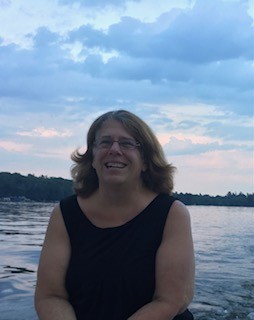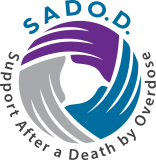
Recovery Community Embraces Peer Grief Support
Part One: Kathi Cotugno
By Luke Schmaltz, VOICES Newsletter Editor
Kathi Cotugno serves her community as Coordinator of DART (Drug Addiction Recovery Teams). She offers valuable insight into coping with loss as an outreach professional and the importance of peer grief support.
In 2016, Cotugno’s son, Adam, died from an overdose of fentanyl and heroin.
In her work, Cotugno strives to honor her son by providing support and guidance for those struggling with substance-use-related issues.
Direction and Support
“My grief is nine years old,” Cotugno begins, “It is not new. At first, I didn’t think I was going to survive. It was very difficult. I needed to find a new purpose and direction, a new life. You can’t go back to your old life when you lose a child.”
In the early months of her grief journey, Cotugno found help through peer grief support. “I found great support through Learn to Cope and through our Mass Share Parent Group,” she says. “I had to figure out what was best for me, which may or may not work for someone else.”
“You need to talk about your loss and your grief. Everybody’s grief is different, but if you keep silent about it, you can’t move forward. On a professional level, when I see a fatal overdose has occurred, I always contact our police officers who responded to the call to make sure they are OK. I share support resources from SADOD with them if it is necessary.”
“Another reason I got through the grief was because my parents raised me to be a very strong individual,” Cotugno says. “If I didn’t have that gumption inside of me, I may not have made it. Also, I had another son I needed to be here for.”
Vital Self-Care
“I feel like I am giving something back to the community through my work,” she explains. “Every person out there has the opportunity to make a change in their life. That’s why I pursue this vocation – I want to help others who are struggling. Unfortunately, at least a couple times a week, we lose someone to overdose.”
“In order to get through the rigors of this work, I put pieces of my life into compartments. It is important to find personal space for yourself that most people you encounter at work don’t necessarily have or need access to.”
Struggle and Balance
“Some mornings, I wonder if I’ll be able to get through the day. I start every day by looking at a post-overdose report to see if individuals in certain communities have overdosed. We serve 23 communities in all, so the chances of that occurring are high. There has to be a little bit of the hardening of the skin in order to do that part of the work. But then, I get to assign two of our community responders to that individual to make connections. So, there’s always a positive.”
Cotugno is witness to a collective shift in the narrative among recovery professionals and police officers who see the value of preventative outreach. “They are tired of doing the work afterwards and are instead asking what can be done to help individuals prior to an overdose.”
“In light of this effort, we do something called an at-risk report. The officers in our communities know the individuals who are struggling, and they will submit a report so that we can try and reach out to those people before something critical happens due to substance use. We are having success with this approach, which is one of the reasons why we are seeing overdose rates drop.”
“DART is a public health, public safety program – so we work directly with our community police officers. This is how we get the daily overdose reports and the referrals for the at-risk reports – they come from the police departments. The officers know their communities and they are usually the first ones on the scene in the event of an overdose. They usually arrive before EMS gets there.”
Purpose and Perspective
“When I come home from work, I have to decompress. There are definitely occasions where I have to say to family and friends, ‘It was a really tough day, and I am choosing not to talk about it right now. Let’s change the topic for now.’ That approach has been helpful in getting me through tough times.”
“Some days I ask myself, ‘Are we making a difference? Things are not changing.’ But, when I look at the big picture from a Department of Health and Human Services standpoint, from my position as a post-overdose outreach worker, I can see the change.”
“We are giving individuals in Northampton a space to drop into where they can access resources. They can have a conversation with another individual or they can get a cup of coffee if they are struggling. You have to look for the little changes that are happening on an everyday basis rather than looking at all the big, negative things happening in the world.”
Cotugno also contends with stigma towards substance users and harm reduction. While the undercurrent is ever-present, attitudes are moving towards acceptance and understanding. “I see so many communities that are rallying around post-overdose work.” she says. “Regardless, we need to remain strong in our support of harm reduction so that we don't start slipping backwards.”
Forthright Action
Recently, a collective of Northampton community leaders introduced legislation which would legalize overdose prevention centers (OPCs) in Massachusetts. A similar bill won support in the state Senate last year but was blocked in the House. This year, the bill was again blocked, but advocates like Cotugno remain optimistic. “Our health department strongly believes in the value of OPCs. But similar to fighting stigma, it is going to require grassroots-level rallying to gain political favor.”
Currently, OPCs are legal only in Rhode Island and New York, yet these successes give hope to other communities looking for a more sustainable way to help people struggling with substance use. “In May, our health department is going to Providence to visit their OPC,” Cotugno explains. “I am really excited about that.”
“Another vital factor in reducing overdoses is that we have saturated our community with Narcan,” Cotugno concludes. “We know that people experiencing an overdose are receiving Narcan from others, so that by the time first responders get to the scene, it has already been administered by a family member, a friend, or a bystander. So, we are saving lives. It is working.”
